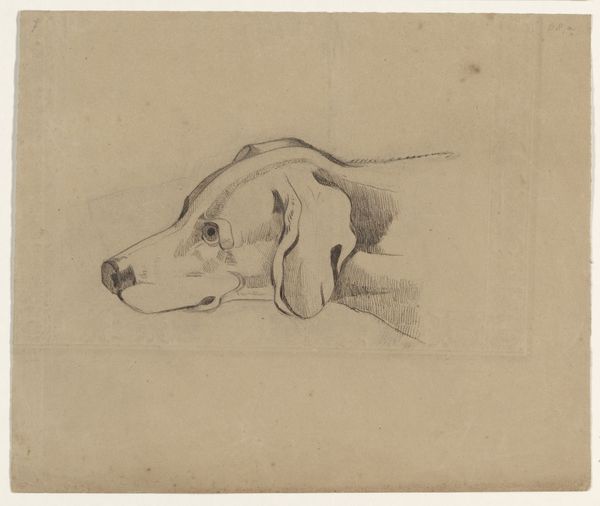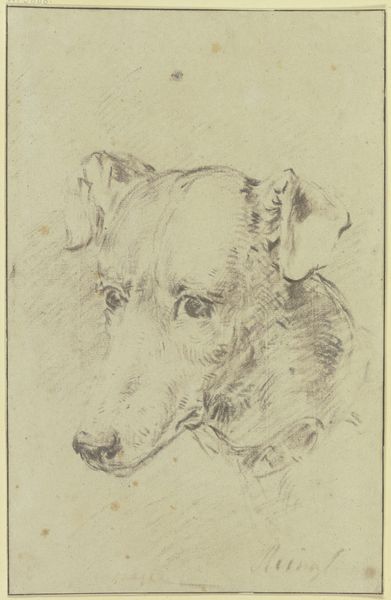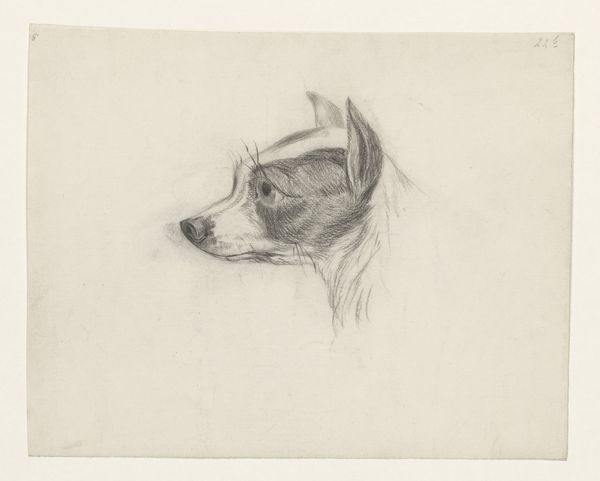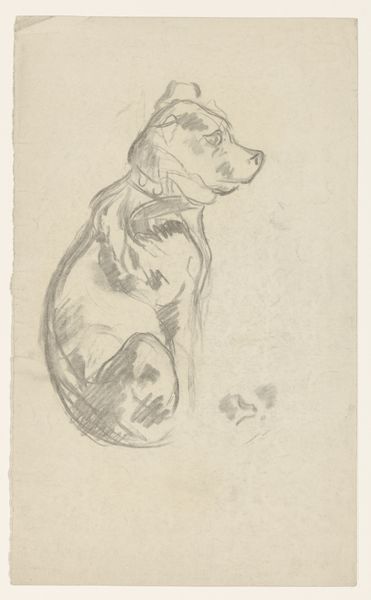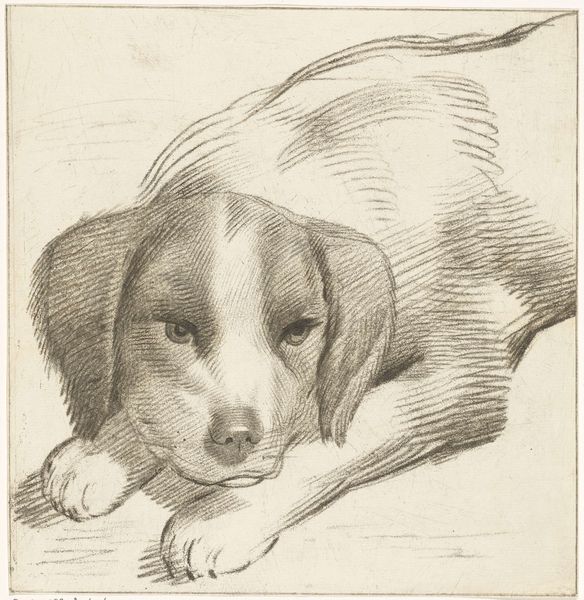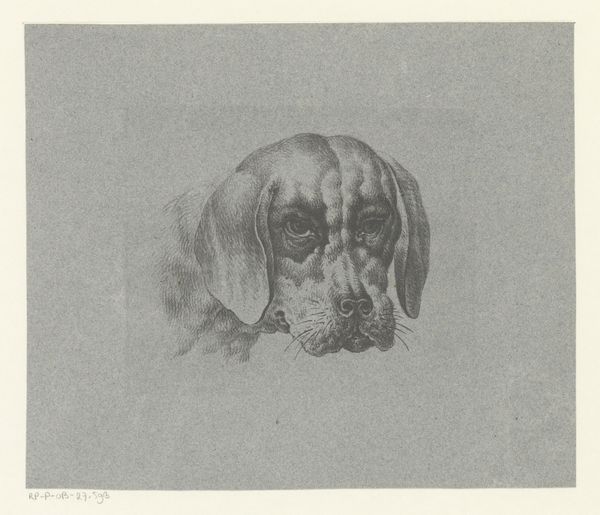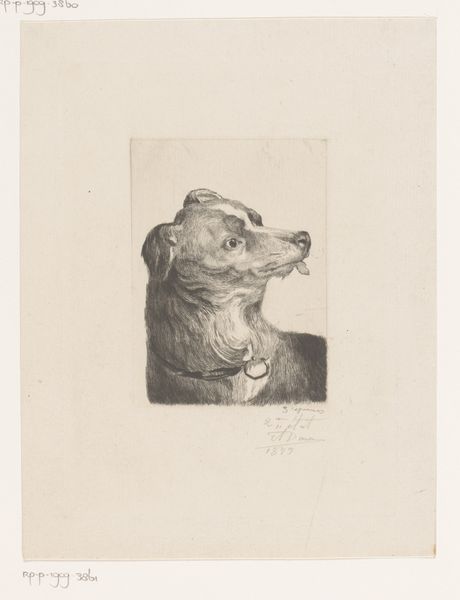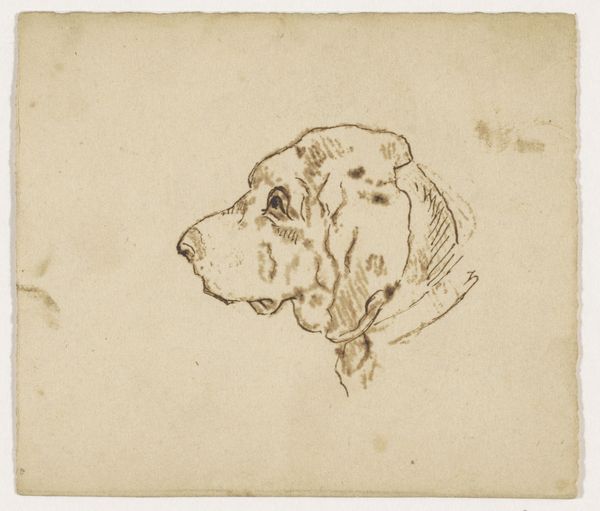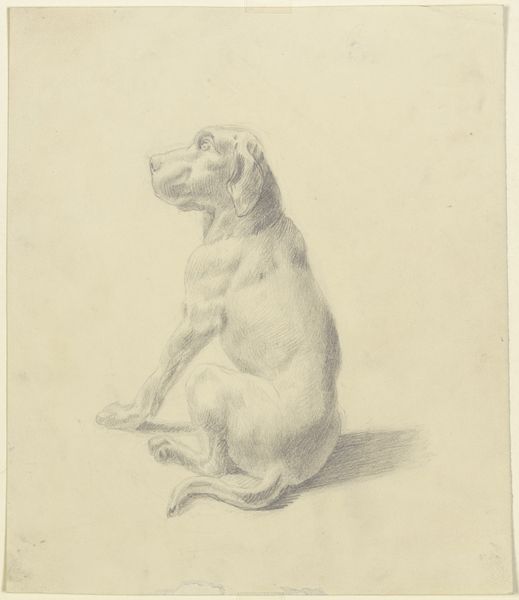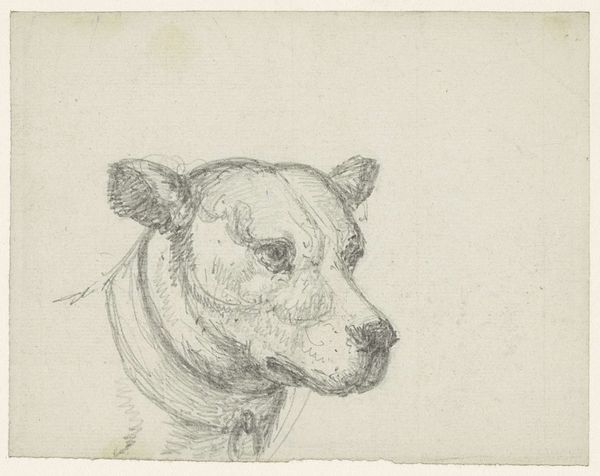
drawing, pencil, charcoal
#
portrait
#
pencil drawn
#
drawing
#
pencil sketch
#
dog
#
charcoal drawing
#
form
#
pencil drawing
#
pencil
#
line
#
animal drawing portrait
#
portrait drawing
#
pencil work
#
charcoal
#
realism
Dimensions: height 210 mm, width 262 mm
Copyright: Rijks Museum: Open Domain
Editor: Here we have Johannes Tavenraat's "Head of a Dog, facing Right," a pencil and charcoal drawing from the 19th century. It’s quite a simple portrait, really, but there's something very direct about its gaze. How would you interpret this work? Curator: This drawing evokes a whole lineage of human-animal relationships. Throughout history, the dog has been a powerful symbol of loyalty and protection. Think of Cerberus guarding the gates of the underworld, or the loyal companions depicted in countless family portraits. Do you see how the artist captures the animal's essence without sentimentality? Editor: Yes, there’s a realism to it, a lack of idealization. The marks seem to trace the dog’s actual form, almost scientifically. Is this connected to something in that period? Curator: Precisely. The 19th century witnessed a rise in scientific naturalism and a renewed interest in accurately representing the natural world. Consider the anatomical studies by artists during the Renaissance - this work by Tavenraat participates in that continuous exploration of form and character. Look closely – what does the direction in which the dog is looking suggest to you? Editor: Hmm…perhaps a sense of watchfulness, of alertness? It's not simply a passive image. Curator: Exactly. Even in its stillness, there's a sense of contained energy, echoing the historical and psychological significance we've long attributed to dogs as guardians and companions. So, it's not just a simple drawing; it resonates with layers of cultural memory. Editor: I see, the simplicity actually allows these broader connections to emerge more clearly. It’s been great to look beneath the surface with you and consider the layers of symbolism and cultural memory embedded in such a straightforward drawing. Curator: Indeed. Art invites us to continuously observe, interpret, and connect across time and cultures. It's in these details that we rediscover familiar narratives and construct new ones.
Comments
No comments
Be the first to comment and join the conversation on the ultimate creative platform.
